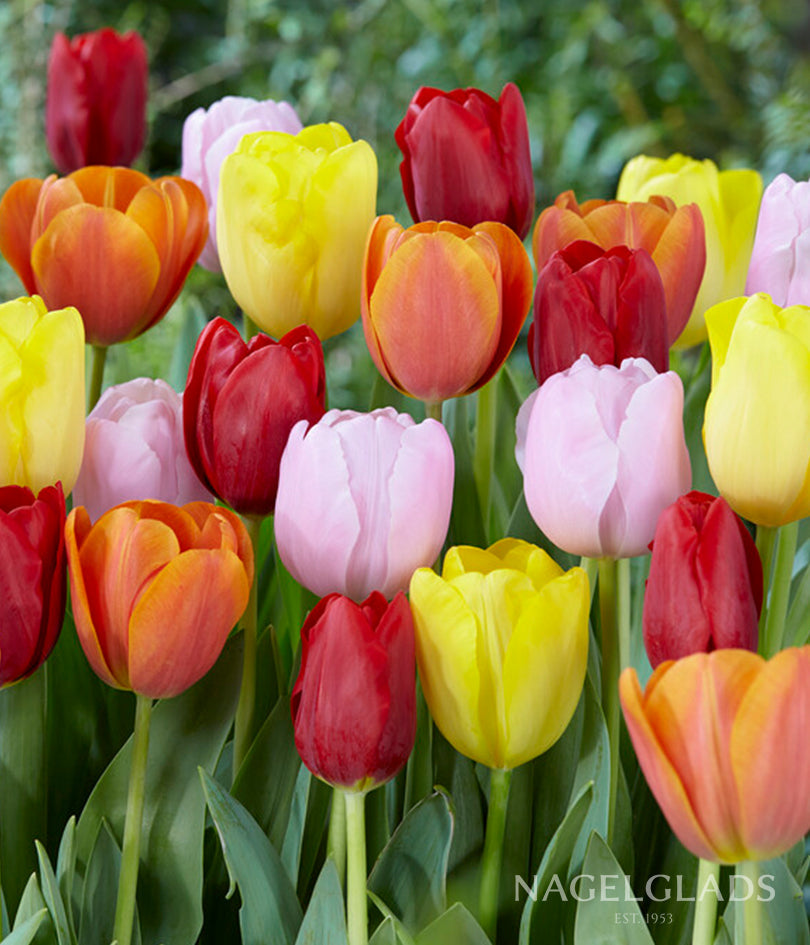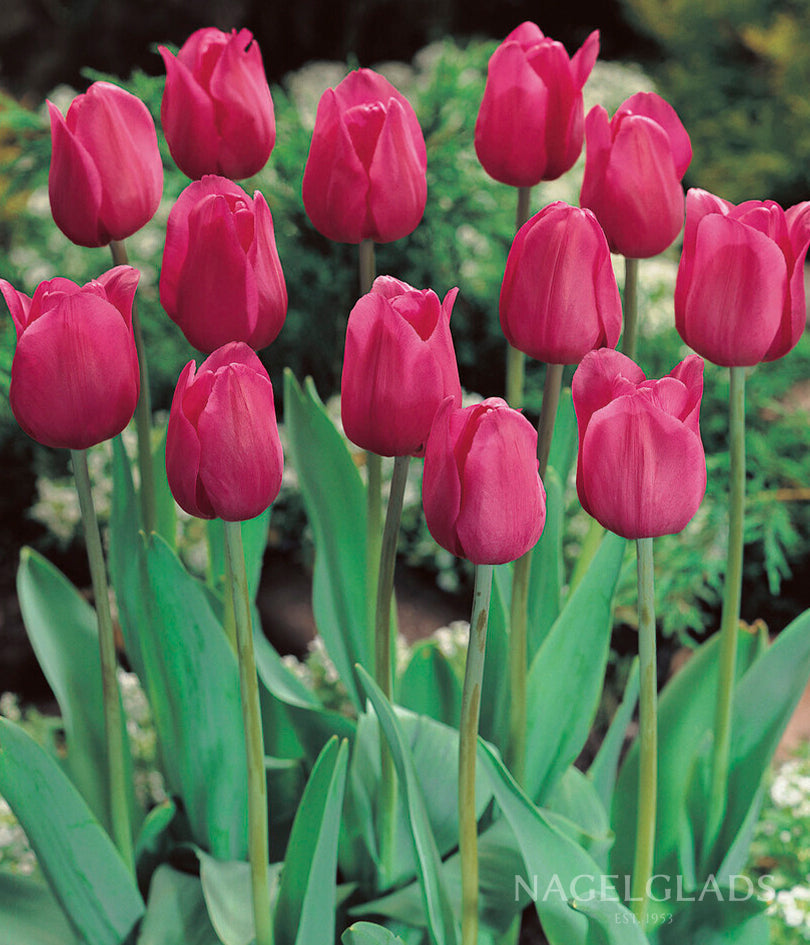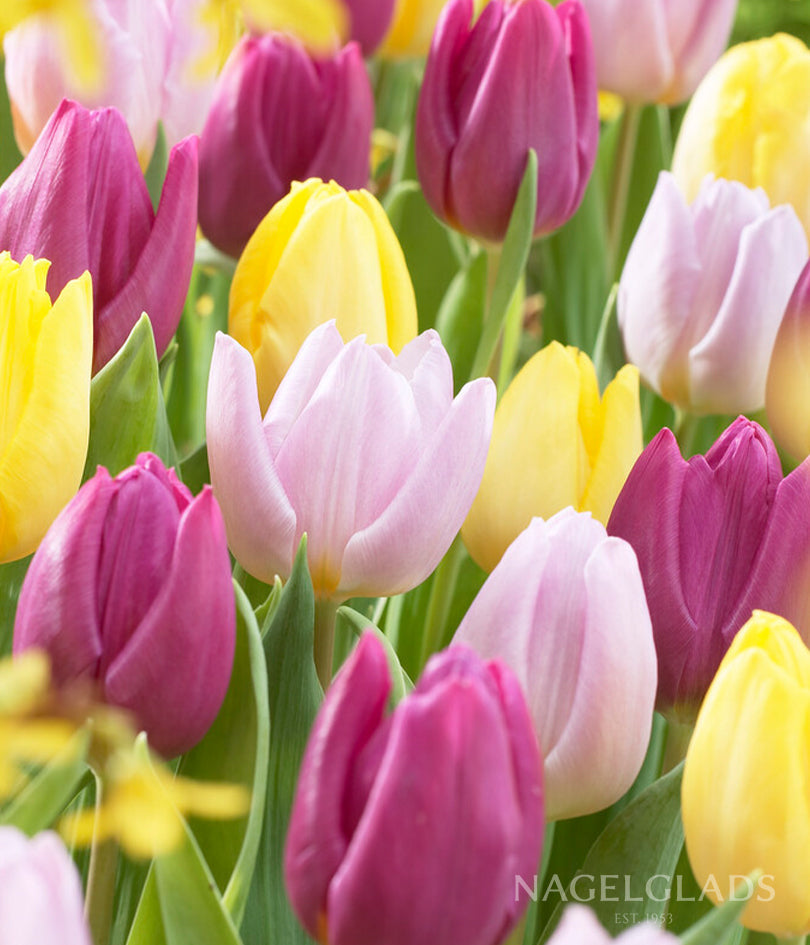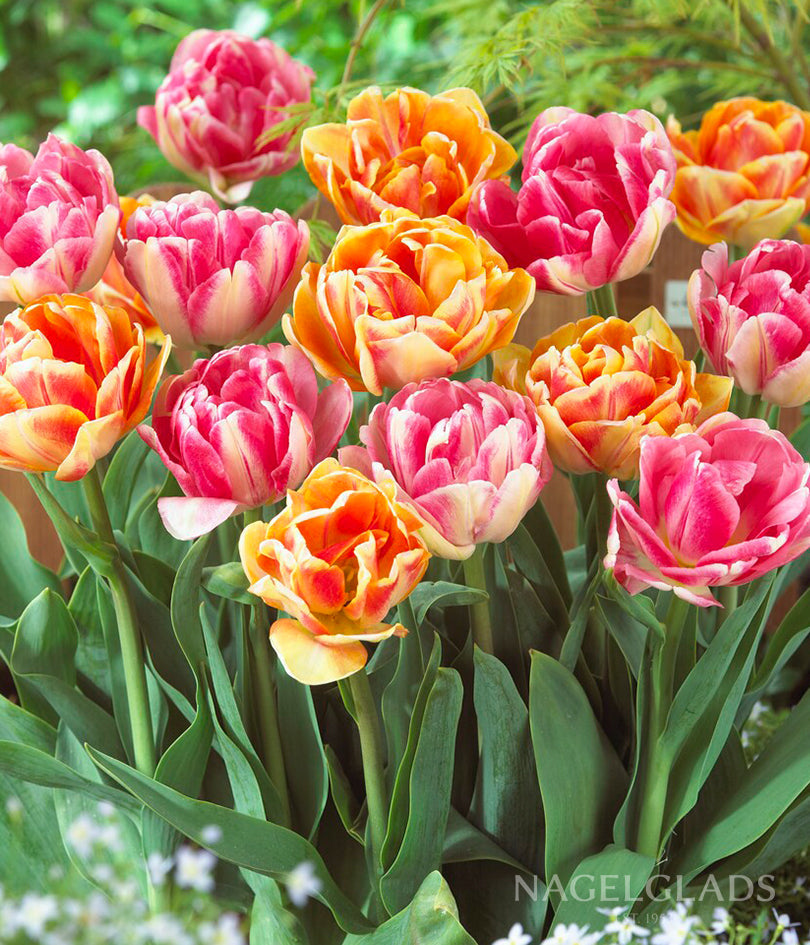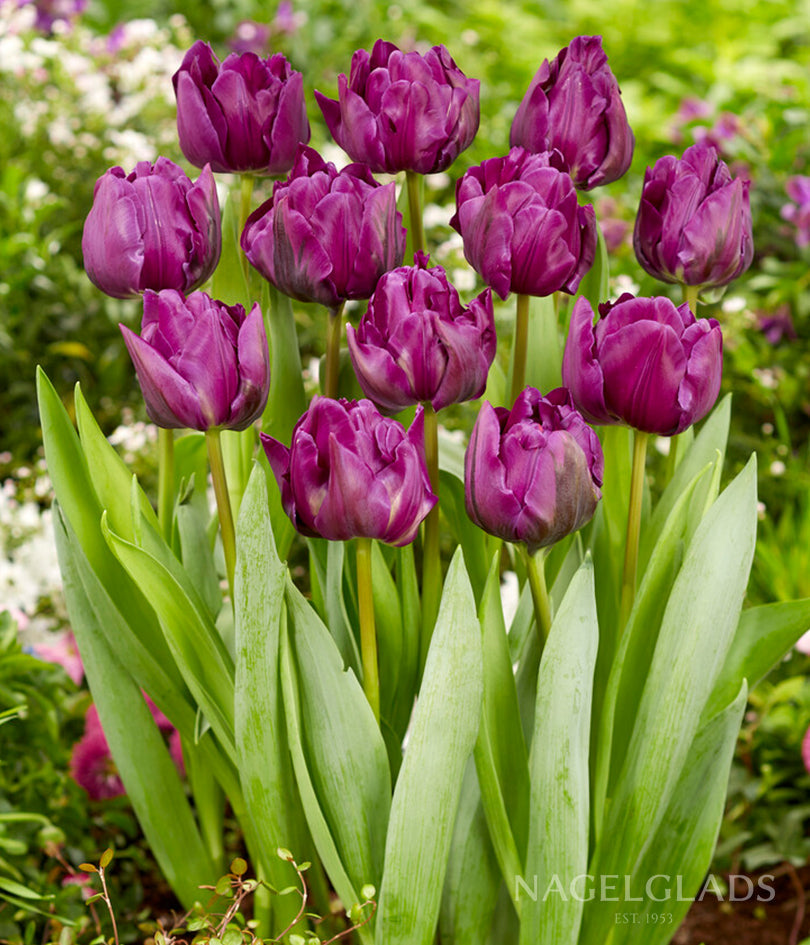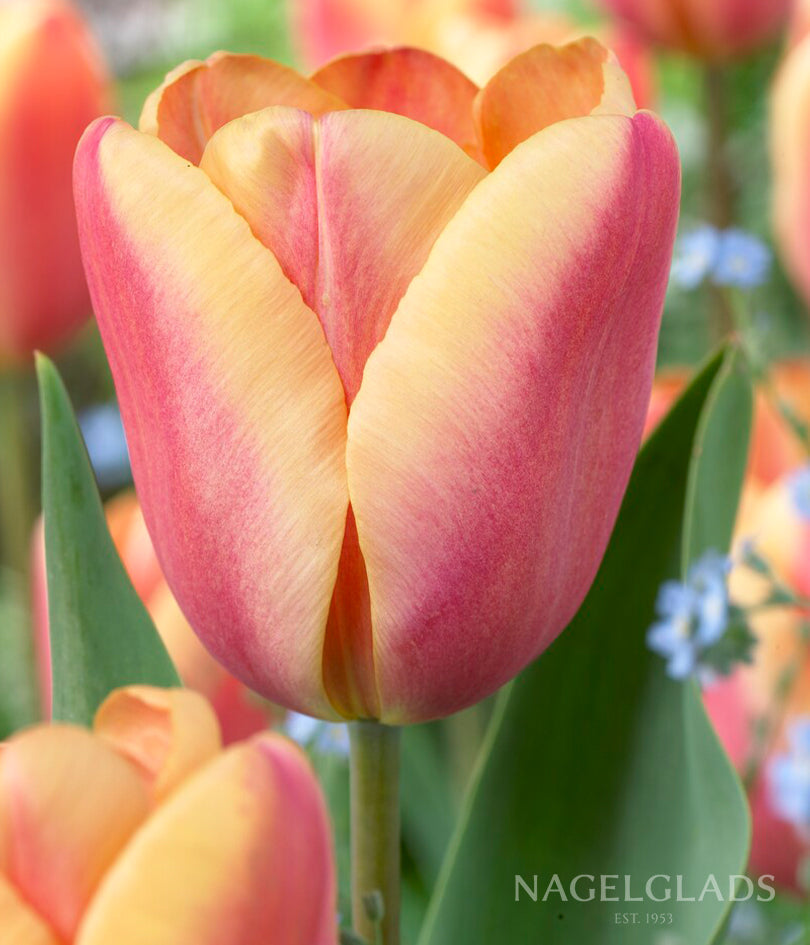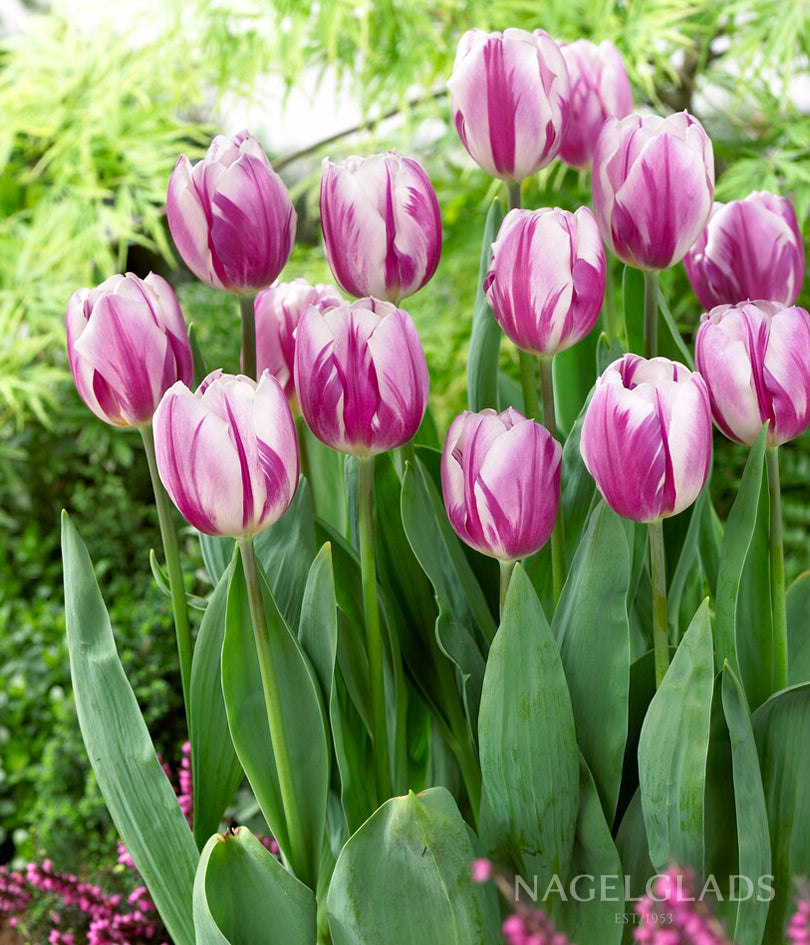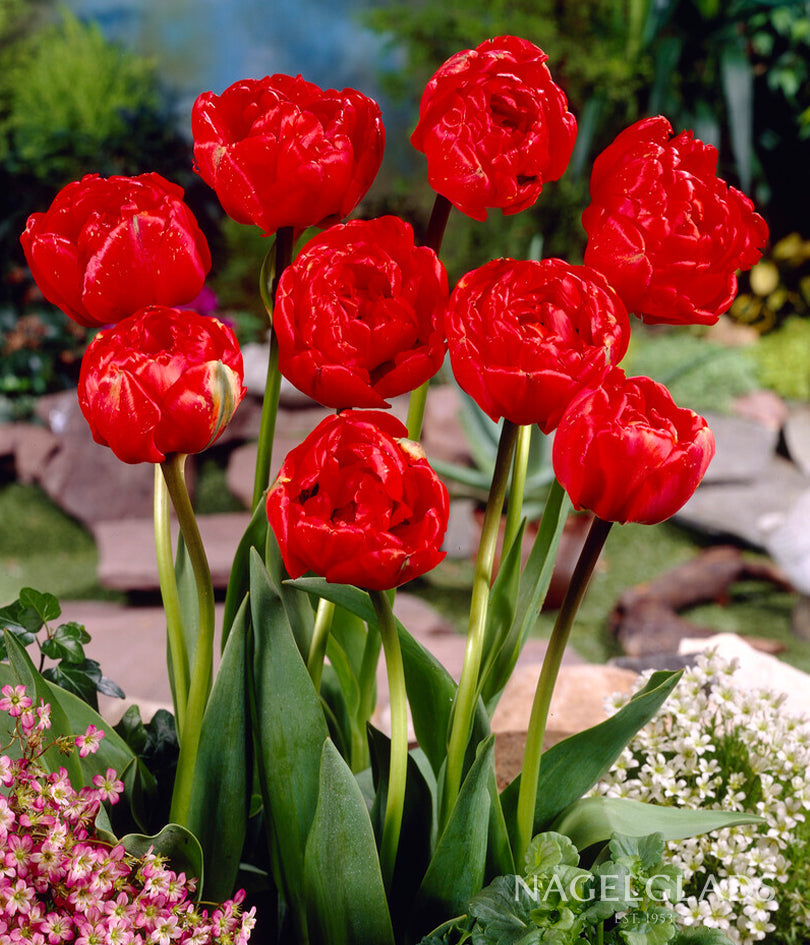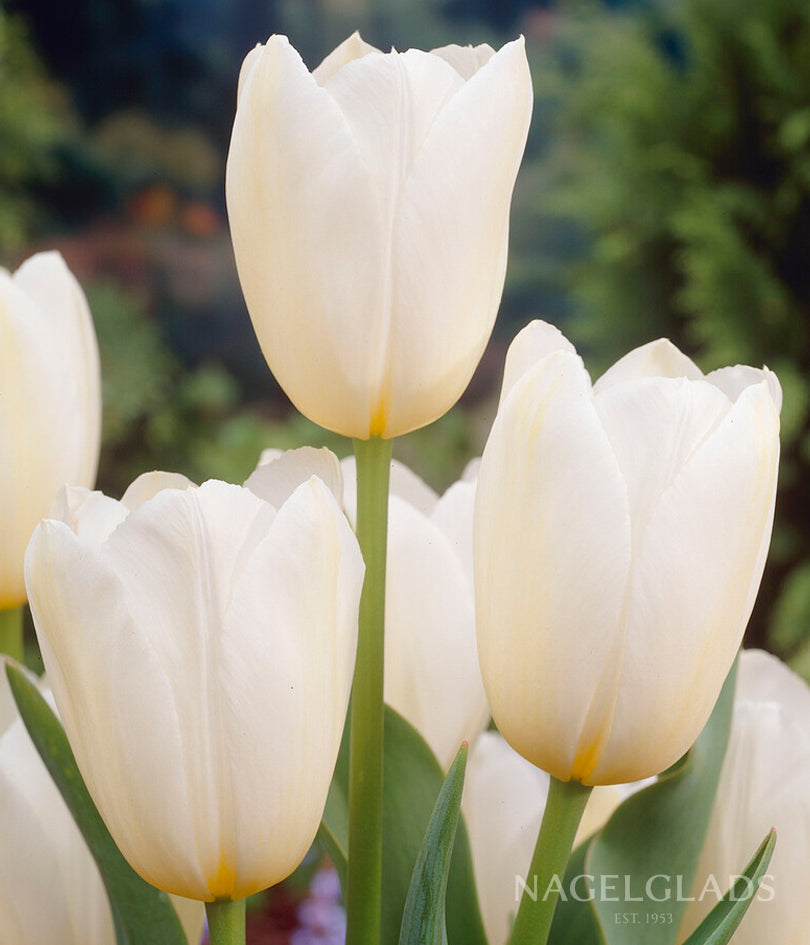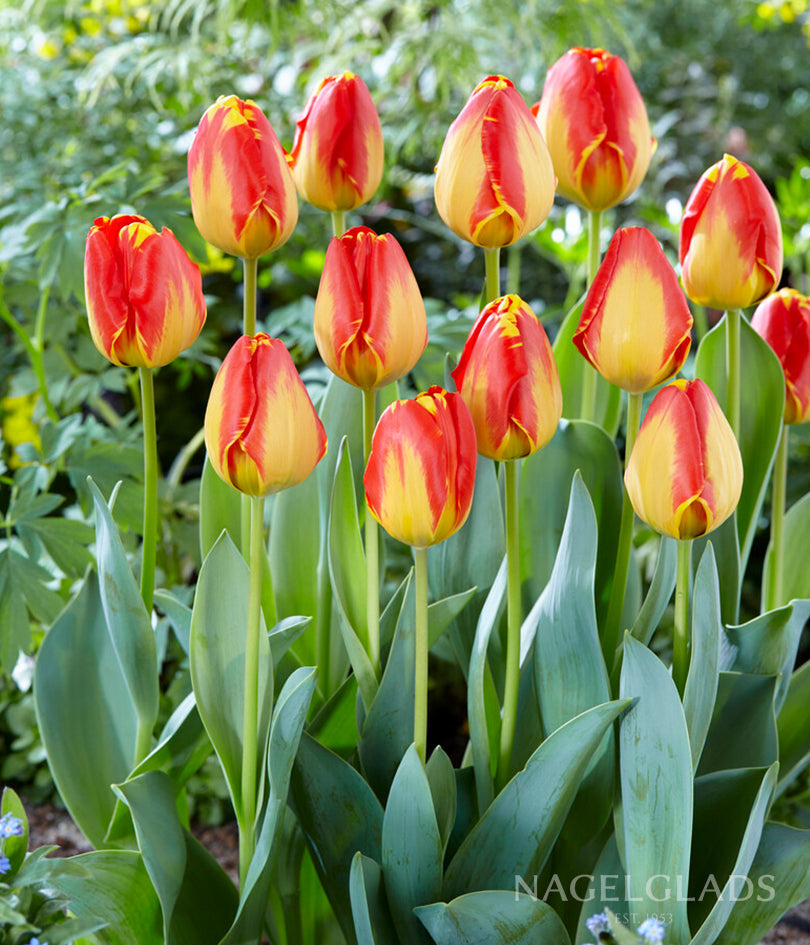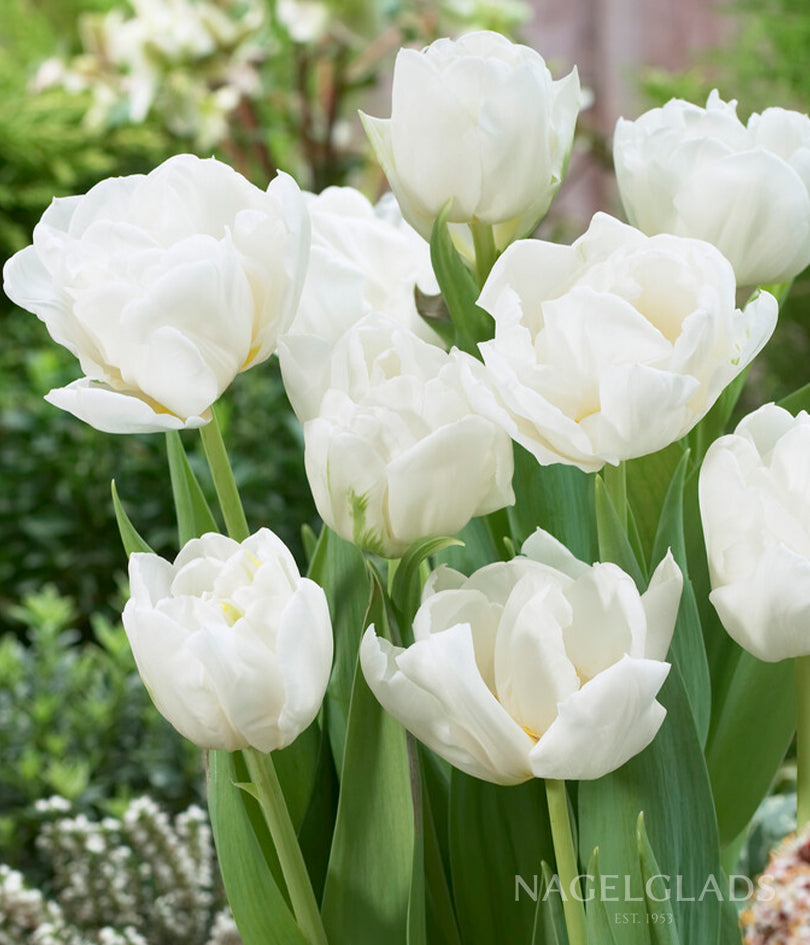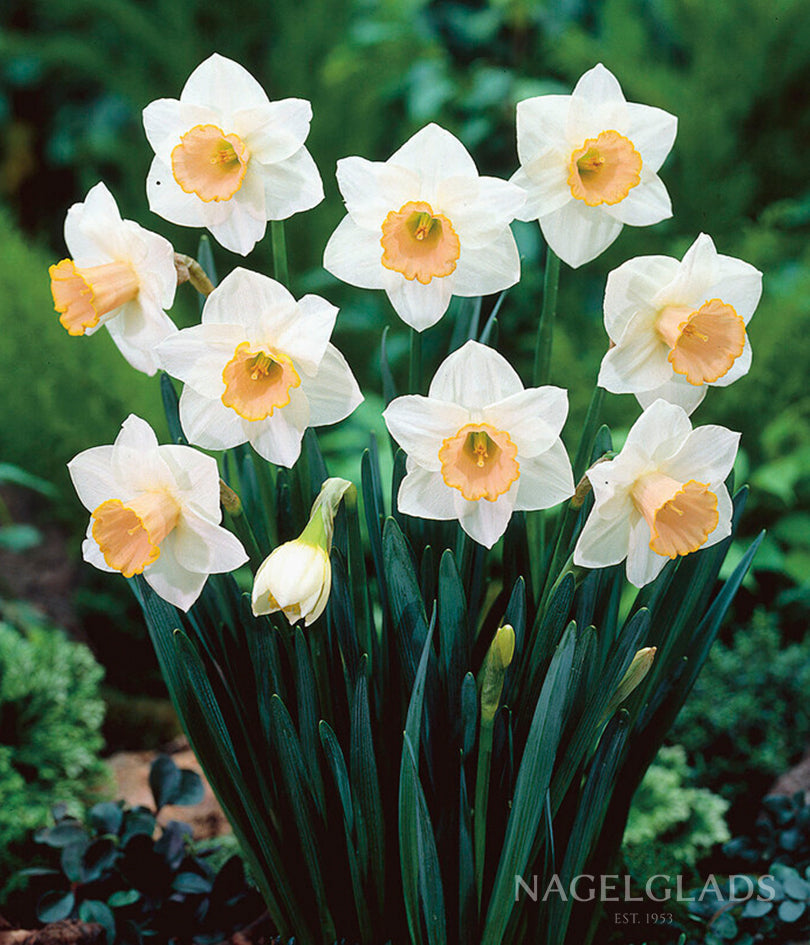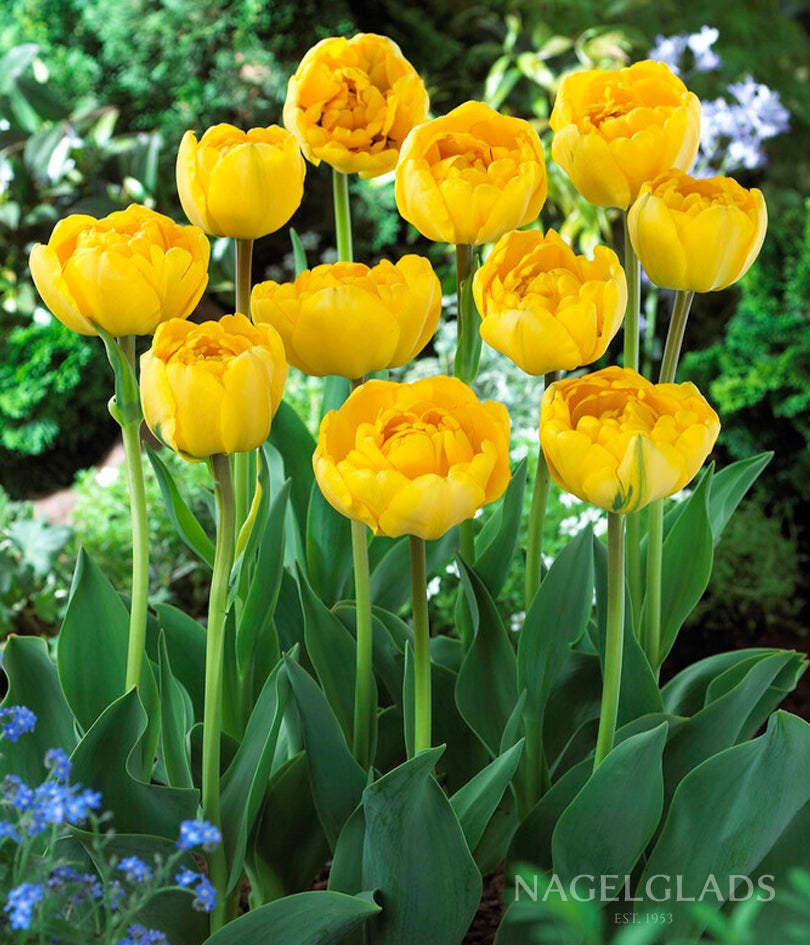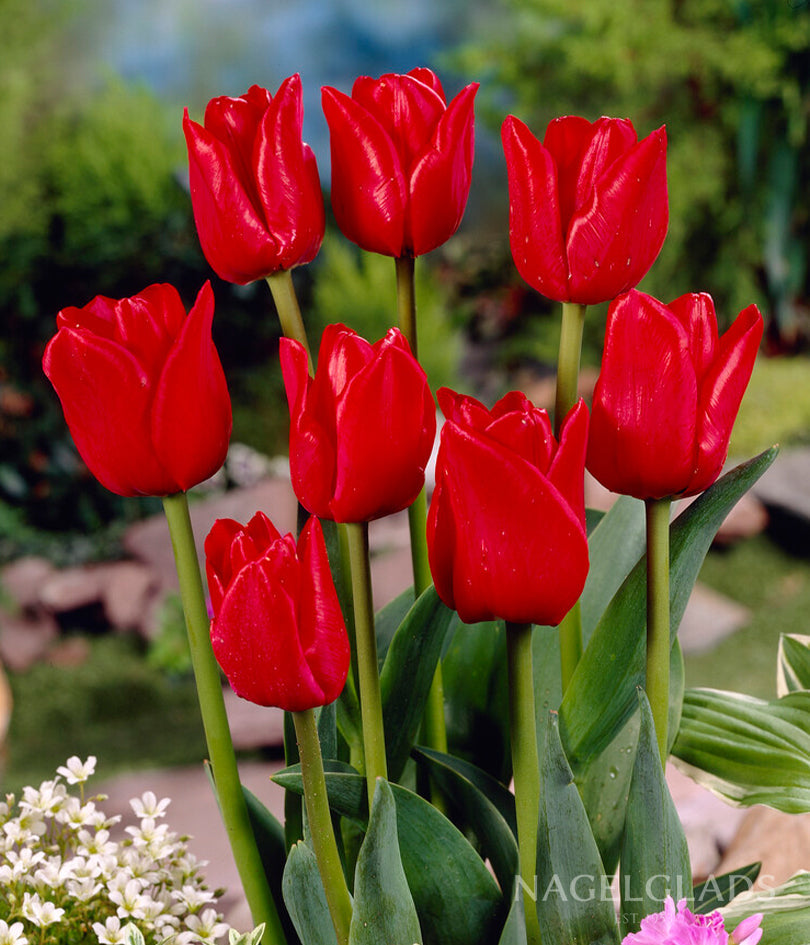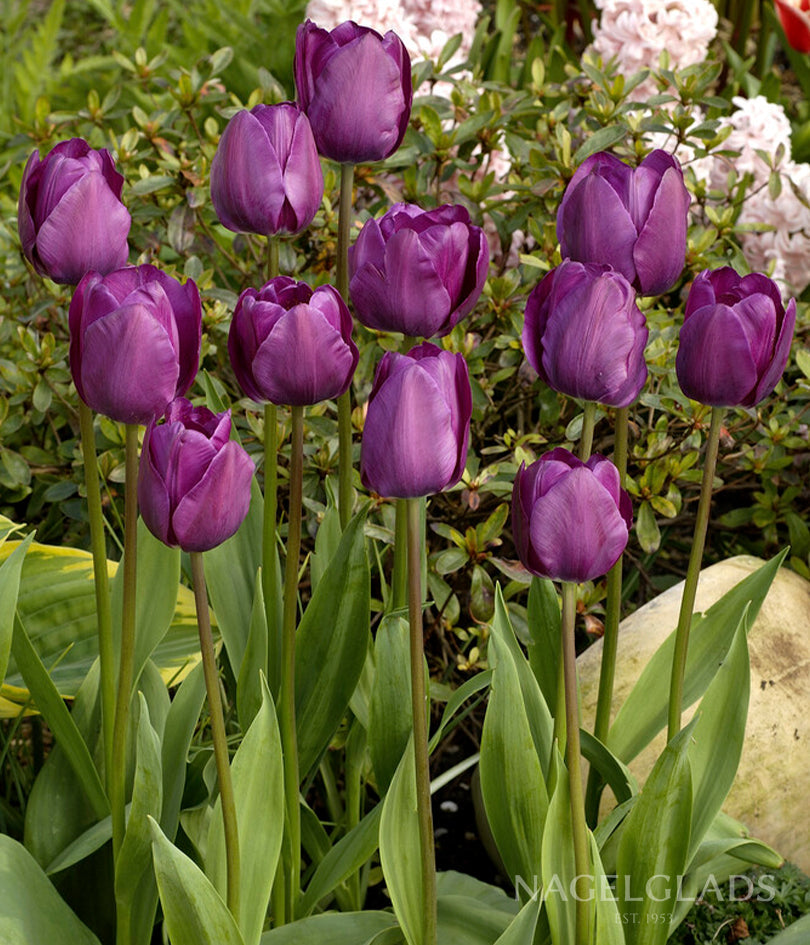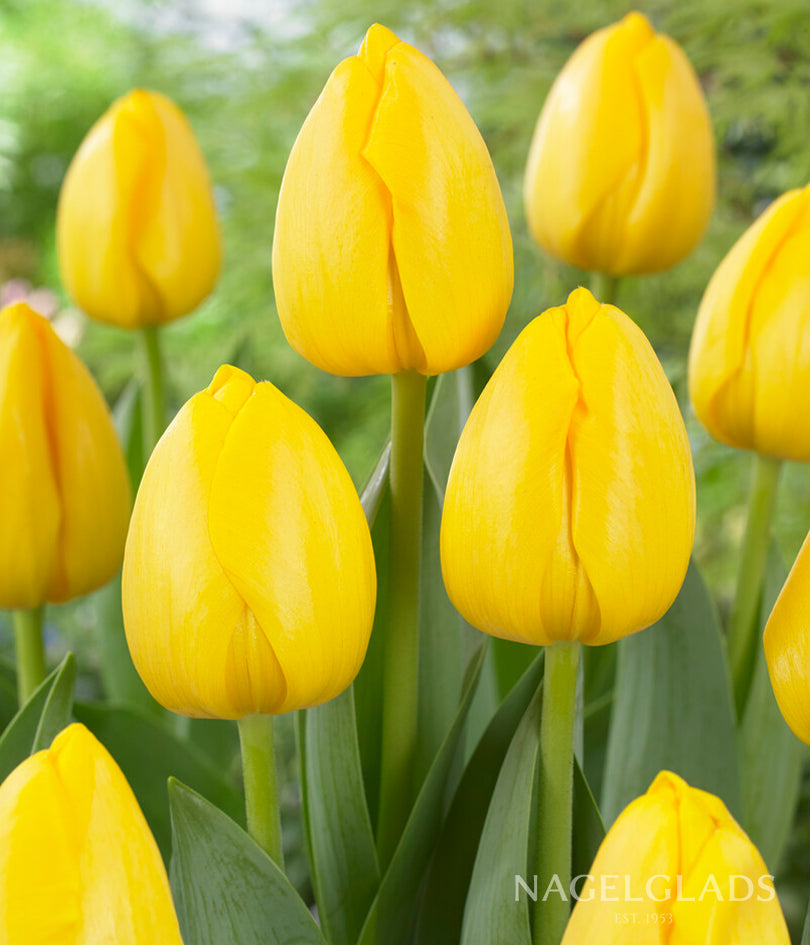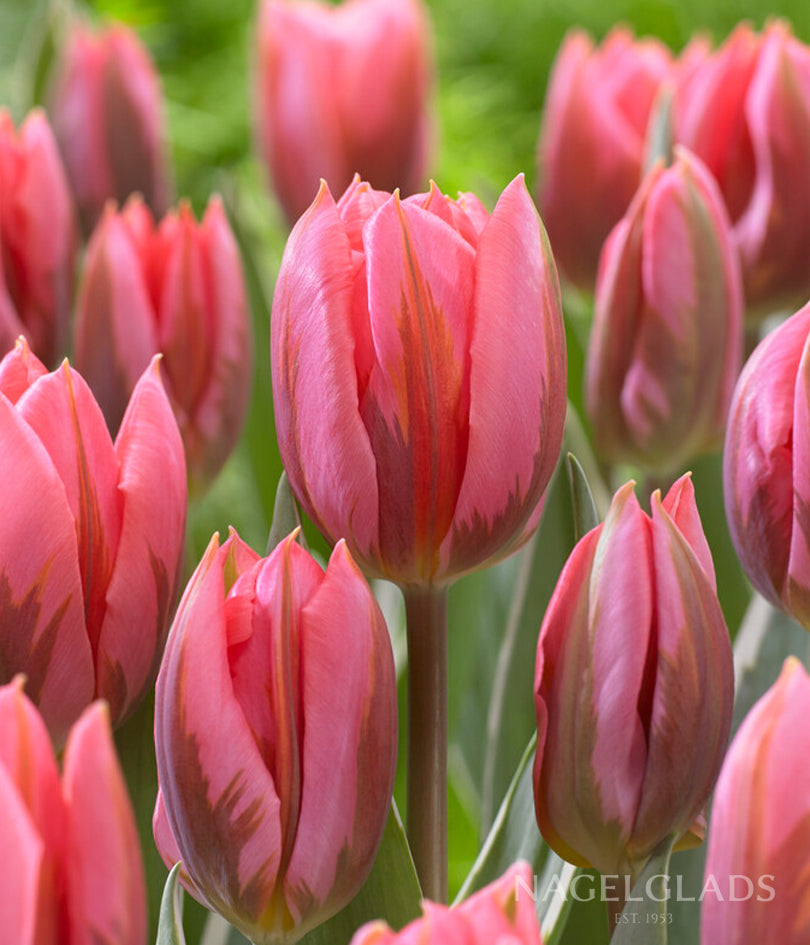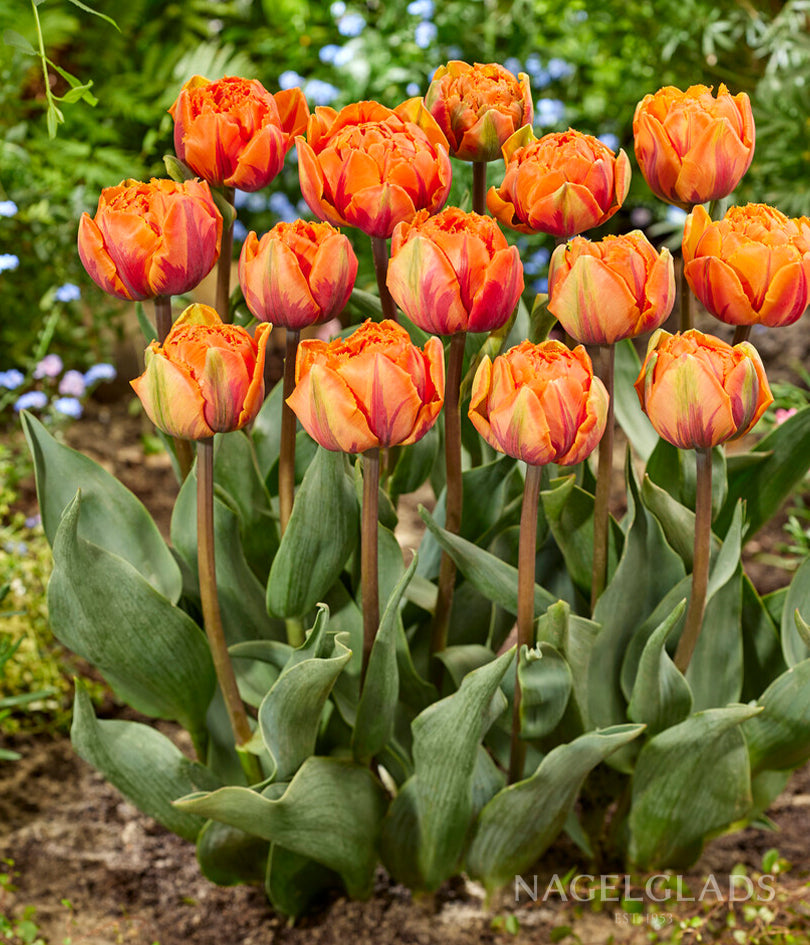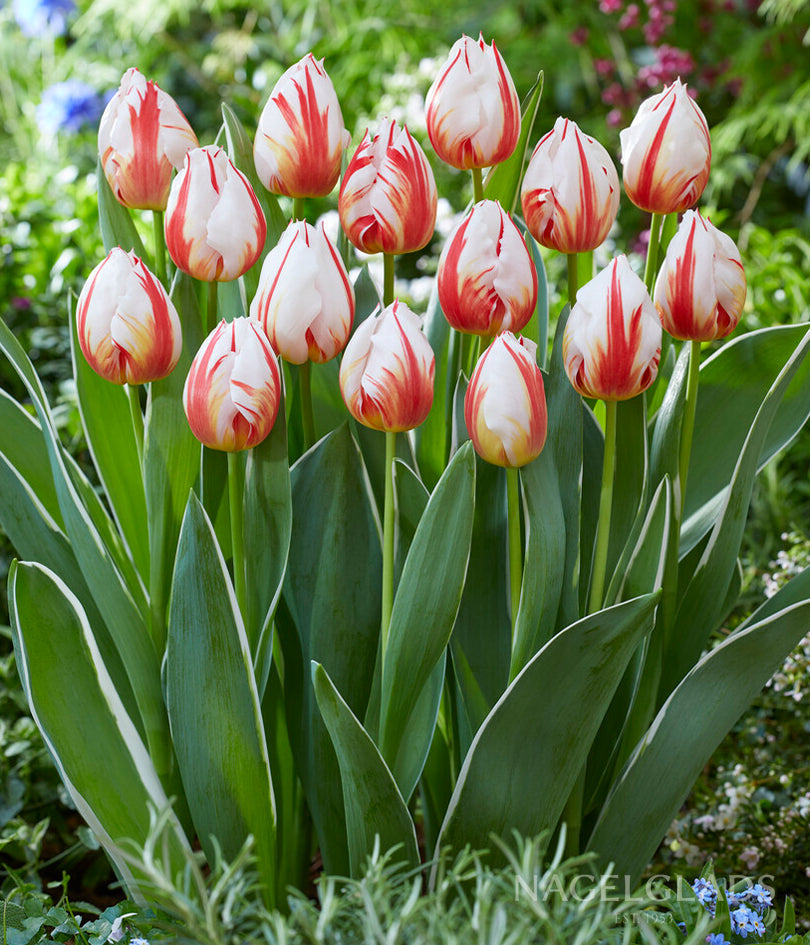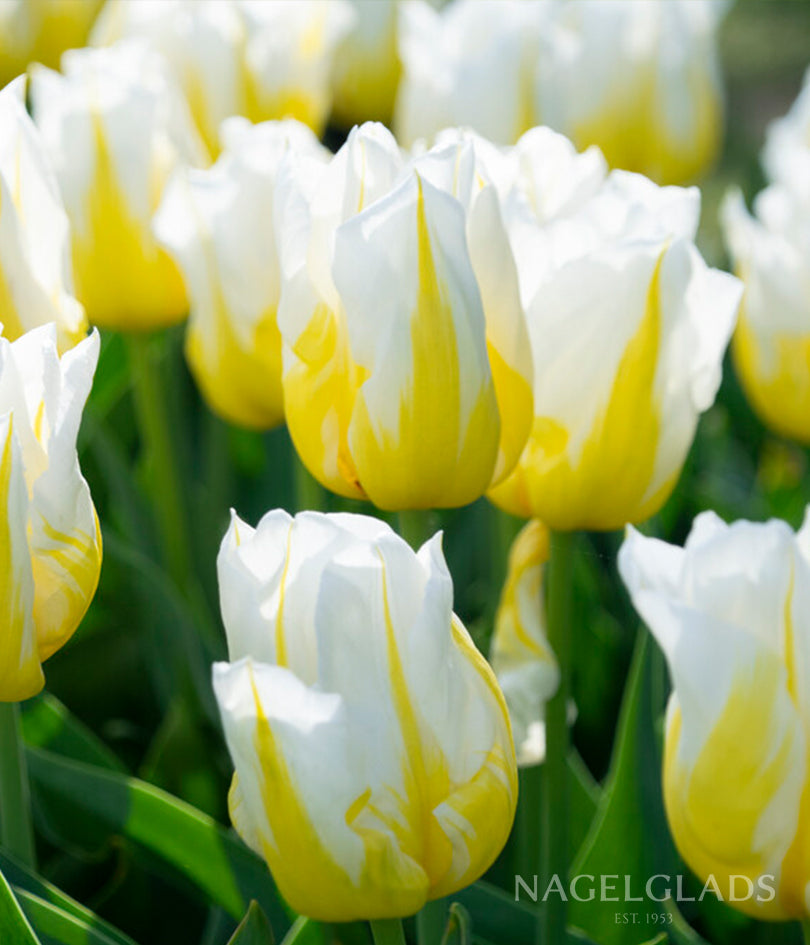When the last bulbs are tucked into the ground, it’s tempting to call it a season. But before you put away your tools, there’s one final step that makes a big difference: winter mulching. This simple layer of protection helps your Tulips, Daffodils, and Alliums stay safe through freezing temperatures and unpredictable weather. With a little care now, you’ll set the stage for a strong, colorful spring.
Why Mulch Matters
Mulch is like a blanket for your garden. It keeps the soil temperature steady through winter’s freeze-thaw cycles, holds in moisture, and keeps weeds from getting a head start. It also helps prevent frost heave, which occurs when the soil freezes and thaws repeatedly, causing the frustrating lifting of bulbs.
For fall-planted bulbs like our Triumph Tulip Mix, Mixed Daffodils, and Mixed Alliums, a good mulch layer keeps them nestled in place until it’s time to bloom again. Even more delicate bulbs, such as Pastel Ranunculus or Mixed Hyacinths, benefit from a little extra insulation.
The Best Time to Mulch
Wait until the ground starts to cool, usually after the first hard frost. If you mulch too early, the soil can stay warm and encourage premature growth. Once the ground feels firm and the nights are consistently cold, you’re in the clear to spread your mulch.
How to Mulch Your Bulbs
Start with clean, organic material like shredded leaves, straw, pine needles, or bark chips. Spread it evenly, about two to four inches thick, over your planting beds. You want to cover the soil, not smother it. The goal is to keep conditions steady and let air and moisture flow through naturally.
If you’re planting in areas where squirrels or voles like to dig, you can add a piece of wire mesh or chicken wire before spreading mulch. It creates a barrier that still allows bulbs like Queen of Night Tulips and Novi Sun Darwin Tulips to grow undisturbed.
Keeping an Eye on Things
Once mulch is down, you can mostly forget about it until spring. When temperatures begin to warm and you see shoots poking through, gently pull the mulch back a bit to let the sun in. If a cold snap returns, it’s easy to tuck it back around your plants for extra protection.
Build Your Spring Show
Winter mulching pairs beautifully with thoughtful bulb selection. For a garden that unfolds over weeks of color, mix early and late varieties. Try Foxtrot Double Tulip Mix for lush, peony-like blooms, Catherina Single Late Tulips for soft tones, and Mount Hood Daffodils for timeless white elegance. Add structure with Multibulbosum Allium, fragrance with Mixed Hyacinths, and charm with Prince Tulip Mix for a classic spring palette.
A Little Effort Now, a Big Reward Later
Taking time to mulch in winter is one of the easiest ways to protect your investment. It keeps your bulbs safe from the cold, discourages weeds, and ensures consistent moisture, which they need to wake up strong in spring.
So before the frost settles in for good, grab those bags of leaves or pine needles and give your garden its cozy cover. Your bulbs will thank you with a spectacular show of color when the snow finally melts.




